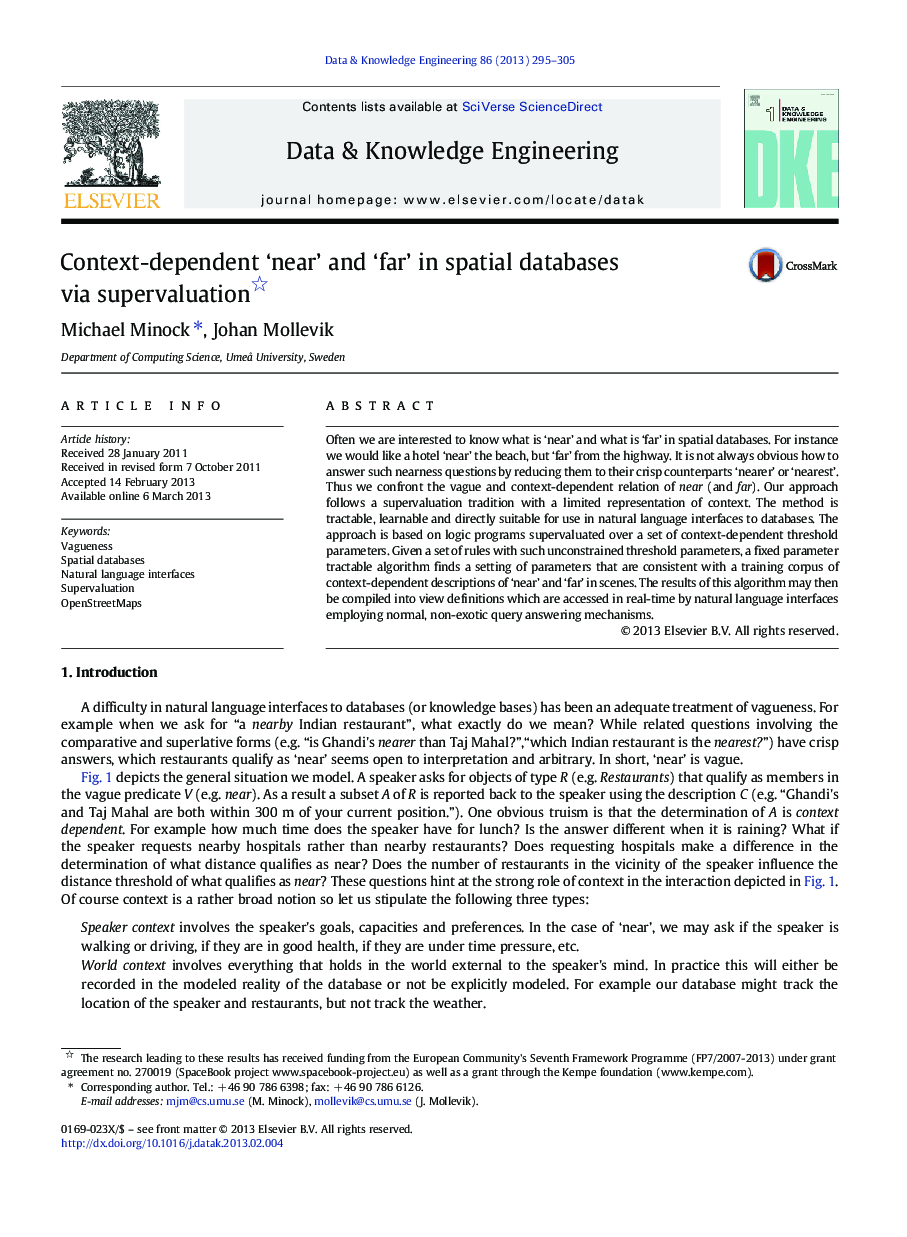| Article ID | Journal | Published Year | Pages | File Type |
|---|---|---|---|---|
| 378790 | Data & Knowledge Engineering | 2013 | 11 Pages |
Often we are interested to know what is ‘near’ and what is ‘far’ in spatial databases. For instance we would like a hotel ‘near’ the beach, but ‘far’ from the highway. It is not always obvious how to answer such nearness questions by reducing them to their crisp counterparts ‘nearer’ or ‘nearest’. Thus we confront the vague and context-dependent relation of near (and far). Our approach follows a supervaluation tradition with a limited representation of context. The method is tractable, learnable and directly suitable for use in natural language interfaces to databases. The approach is based on logic programs supervaluated over a set of context-dependent threshold parameters. Given a set of rules with such unconstrained threshold parameters, a fixed parameter tractable algorithm finds a setting of parameters that are consistent with a training corpus of context-dependent descriptions of ‘near’ and ‘far’ in scenes. The results of this algorithm may then be compiled into view definitions which are accessed in real-time by natural language interfaces employing normal, non-exotic query answering mechanisms.
